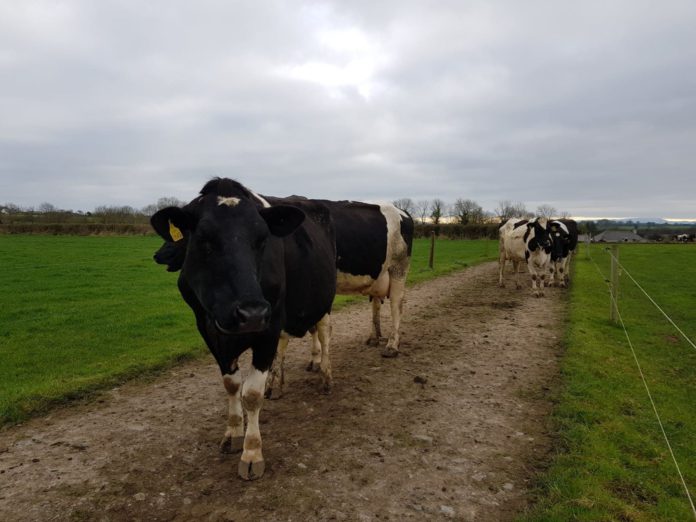The Department of Agriculture, Food, and the Marine has warned of a seasonal phosphorus deficiency in some dairy cattle herds this year.
DAFM Regional Veterinary Laboratories (RVLs) report a marked prevalence of seasonal phosphorus deficiency in blood samples from certain dairy herds.
Of the 73 bovine blood’s tested for inorganic phosphorous (Pi) in Athlone RVL in April 2021, 47% had Pi values that were low/below the normal range.
Phosphorus deficiency cattle
In a statement, a DAFM spokesperson said: “The recent dry weather decreases the ability of pasture to uptake phosphorus, also observed in a similar prolonged dry spell in April and May 2020.”
“Phosphorus deficiency in cattle is associated with weakness, decreased milk yield, infertility, haemoglobinuria and ‘pica’ or depraved appetite (a craving to lick/eat abnormal items such as stones).”
“Veterinary practitioners have been alerted, and they will consider seasonal phosphorus deficiency in herds where these signs occur and will confirm this by blood samples sent to the nearest Regional Veterinary Laboratory.”
The DAFM is advising farmers to contact their vet for treatment advice if they suspect this condition in their herd. They are urged to discuss preventive measures with their vet or Teagasc advisor.
Cows eating stones
Last year, we published an article following reports of cows eating stones, plastic and many other things they should not while grazing.
According to The Agriculture and Horticulture Development Board (AHDB), this abnormal behaviour is called pica.
While animals showing pica can look healthy, this behaviour can lead to undesirable consequences, such as ingesting an object that could damage the internal organs of the cow.
AHDB say that the reasons behind pica are not completely clear, but these abnormal activities are generally associated with mineral deficiencies, such as sodium or phosphorous. Pica can also be associated with a lack of structural fibre.
According to AHDB, a lack of structural fibre in grazing herds is unlikely at this time of the year as grass enters the reproductive phase. Therefore, mineral deficiencies is the most probable cause of pica in the herd.
They recommend that you talk to your vet about running blood tests to check the mineral status of the herd.
However, they added, diagnosis of mineral deficiencies through a blood test can be challenging.





